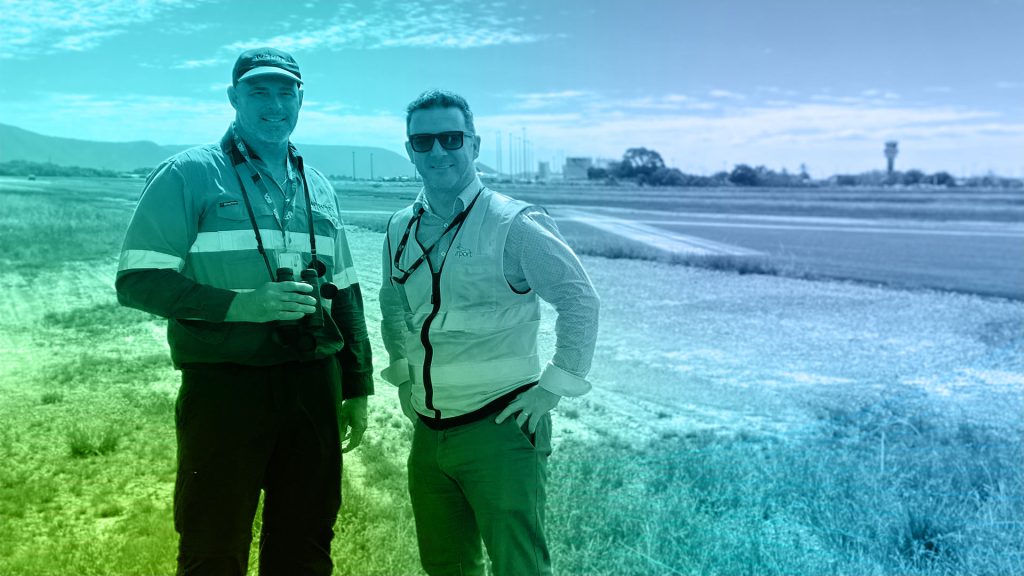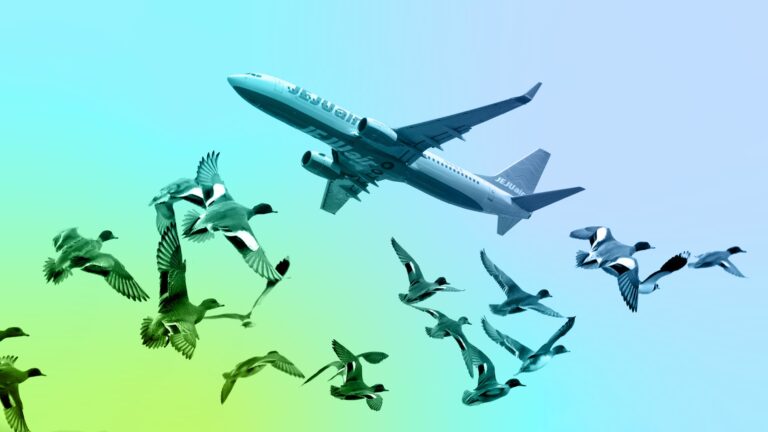The first in a series of articles profiling industry personnel proactively managing wildlife hazards. Davy Semal (pictured on the right), currently Cairns Airport aerodrome operations manager, has been with the airport for two years.
‘The whole airport is unique’ Semal says. The airport’s location, on tropical terrain ringed by mountains and the sea, with the city of Cairns immediately to the south, and the Barron River to the north, means the site is constrained for real estate. The rich biodiversity of the area adds another dimension to wildlife hazard management. Cairns Airport has a proud record of innovative work in this area. In 2007, in view of the issues they were having with flying foxes, they commissioned a study which identified seasonal flying fox flight paths from their camps in the city traversing the airport to feed on flowering melaleucas. In response, they instituted a best practice flying fox program in 2008.
‘I would like to acknowledge the work of my predecessors in managing flying foxes’, he says. ‘Although in recent years the flying foxes are not traversing the airport airspace as they have previously, our teams remain vigilant to any recurrence of the issue.’ Problem species for Cairns currently are the bush-stone curlew and the masked lapwing, as well as the black-necked stork (jabiru) which is being monitored closely.
‘Wildlife hazard management at Cairns is a team effort. I would like to give a shout out to the Cairns aerodrome safety officers whose knowledge and experience help me enormously – having that helps me sleep at night.’
Semal says he would also like to introduce some new passive management techniques to the airport, learning from Darwin International Airport’s success with integrated vegetation management. And seeing their effectiveness first-hand at Alice Springs Airport, ‘it would be great to introduce the stockwhip as an extra tool in our dispersal arsenal’.
His entry into aviation was by accident, quite literally. ‘I was born and bred in Belgium, and from an early age all I wanted was to become a professional footballer. My whole life revolved around soccer, and my parents invested a lot of time and money getting me to training and competitions.’
However, that dream was shattered when Semal was 18 years old. ‘I was in the final year of school and had an accident – a spinal cord injury – which ended my soccer career.’ It was a tough time; having been so focused on soccer, he was lost as to what to do with the future. ‘My parents had never really travelled much, so I thought I would do something completely different and study tourism.’ He gained a Bachelor of Business Administration, majoring in tourism, which opened the door to overseas travel. An internship during his degree took him to South Africa and a game reserve near Kruger National Park. ‘The aviation bug really bit me then,’ he says. ‘The owner had a microlight he used to monitor the animals, and I flew with him. The views were spectacular, magnificent sunsets over the veldt’ and the bird’s eye view of the wildlife from the aircraft was breathtaking.
Several years globetrotting working for Thomas Cook as a tour representative followed graduation, with Semal enjoying the opportunity of free travel and working in places such as Spain, Turkey, Tunisia, Egypt and the Dominican Republic. On a colleague’s recommendation, he came to Australia for a working holiday, scuba diving in Cairns in 2008.
There, with the encouragement of Sally Scott from the North Queensland Aero Club, Semal gained his private pilot’s licence, and his commercial licence and instrument rating, launching his aviation career. His aviation experience includes operational management in the charter sector, and airport ops management in the Northern Territory, first at Alice Springs and then Darwin.
He has now come full circle in his Australian journey. In May 2021, with his wife and family, he returned to Cairns where his aviation career began, when as a newly minted commercial pilot, he flew sightseeing tours for the North Queensland Aero Club.




